7 weird foods you only eat on your gap year, from guinea pigs to spiders
Reminisce about that time you wore a batik poncho and indulged in some local delicacies

Your support helps us to tell the story
From reproductive rights to climate change to Big Tech, The Independent is on the ground when the story is developing. Whether it's investigating the financials of Elon Musk's pro-Trump PAC or producing our latest documentary, 'The A Word', which shines a light on the American women fighting for reproductive rights, we know how important it is to parse out the facts from the messaging.
At such a critical moment in US history, we need reporters on the ground. Your donation allows us to keep sending journalists to speak to both sides of the story.
The Independent is trusted by Americans across the entire political spectrum. And unlike many other quality news outlets, we choose not to lock Americans out of our reporting and analysis with paywalls. We believe quality journalism should be available to everyone, paid for by those who can afford it.
Your support makes all the difference.Culturally appropriating hairstyles, collecting questionable tattoos and acquiring a mahogany tan? Yes, these are all important components of a cliché-filled gap-year. But coming back wearing your weird food experiences like a badge of honour is perhaps the most crucial element of one’s travels. Ensure you consume at least one of the “interesting” delicacies below.
France: Pig intestine sausage
At home, you probably thought French food consisted mainly of champagne, cheese and tiny, perfect patisserie. Then you arrive and quickly realise that you have to get involved with offal. Andouillette may be the most challenging of all the animal insides – a coarse sausage made of seasoned pork intestines stuffed inside a bigger pork intestine, with a smell and taste described as “stale urine”, “toilet mixed with pig fat” and “bad bad bathroom”.
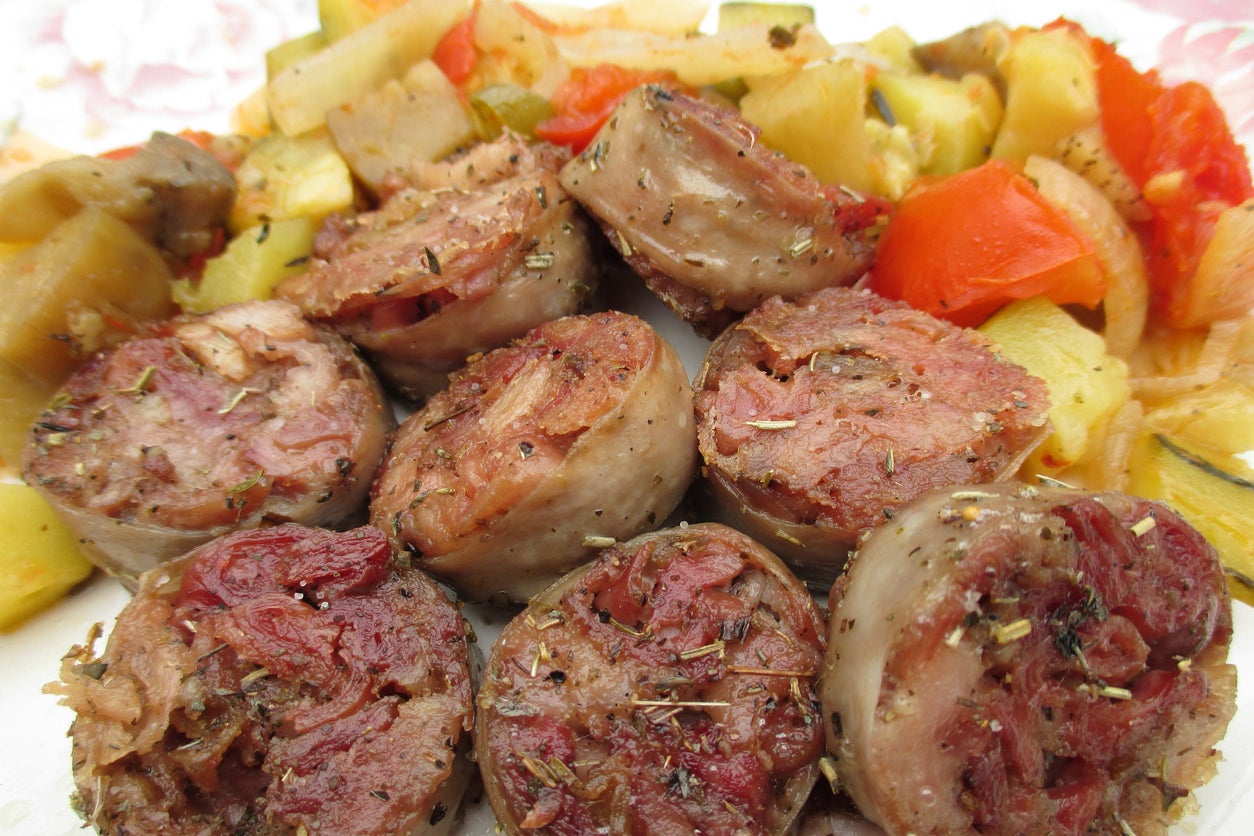
Peru: Guinea pig
Small, cuddly and very delicious, guinea pigs are a regional delicacy in Peru. Incas ate your childhood pet for centuries, farmers in the Andes continued the tradition and now the cute fluffballs are available in high-end Lima restaurants and food stalls alike. Traditionally, they were served with teeth and claws intact on a skewer as a street kebab, but now you can have them bone and skin free as a fancy starter. Said to taste like rabbit or pork.

Cambodia: Tarantulas
The deep fried arachnids, or A-Ping, as they are known locally, are a street food classic. Spider eating was born out of necessity during the brutal Khmer Rouge regime when food shortages were widespread but have remained on the menu due to the delectable combo of their crunchy legs and squishy bodies. Covered in salt, sugar, garlic and oil, it is advised to pull the legs off one by one and eat them first to avoid the sensation of the spider walking around in your mouth.
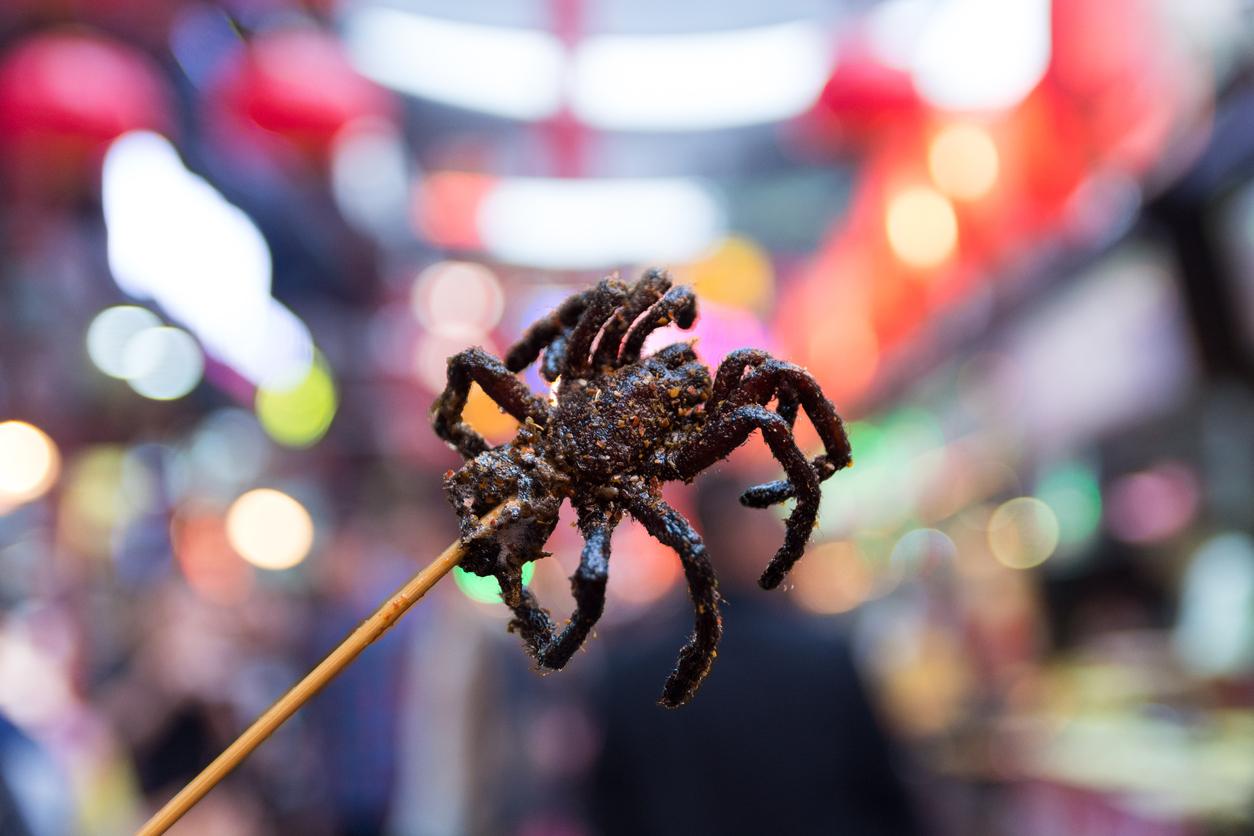
Singapore: Durians
Public food enemy number one in Singapore, this stinky fruit is banned on public transport and is so famous it has its own “don’t eat me here” sign. Loved and hated in equal measure, the spiky treat tastes custardy and almondy, with a strong smell of feet, sewage and an aftertaste of onion. Truly the marmite of South East Asia, it is used to flavour cakes, ice cream, curries and soups, as well as eaten alone.
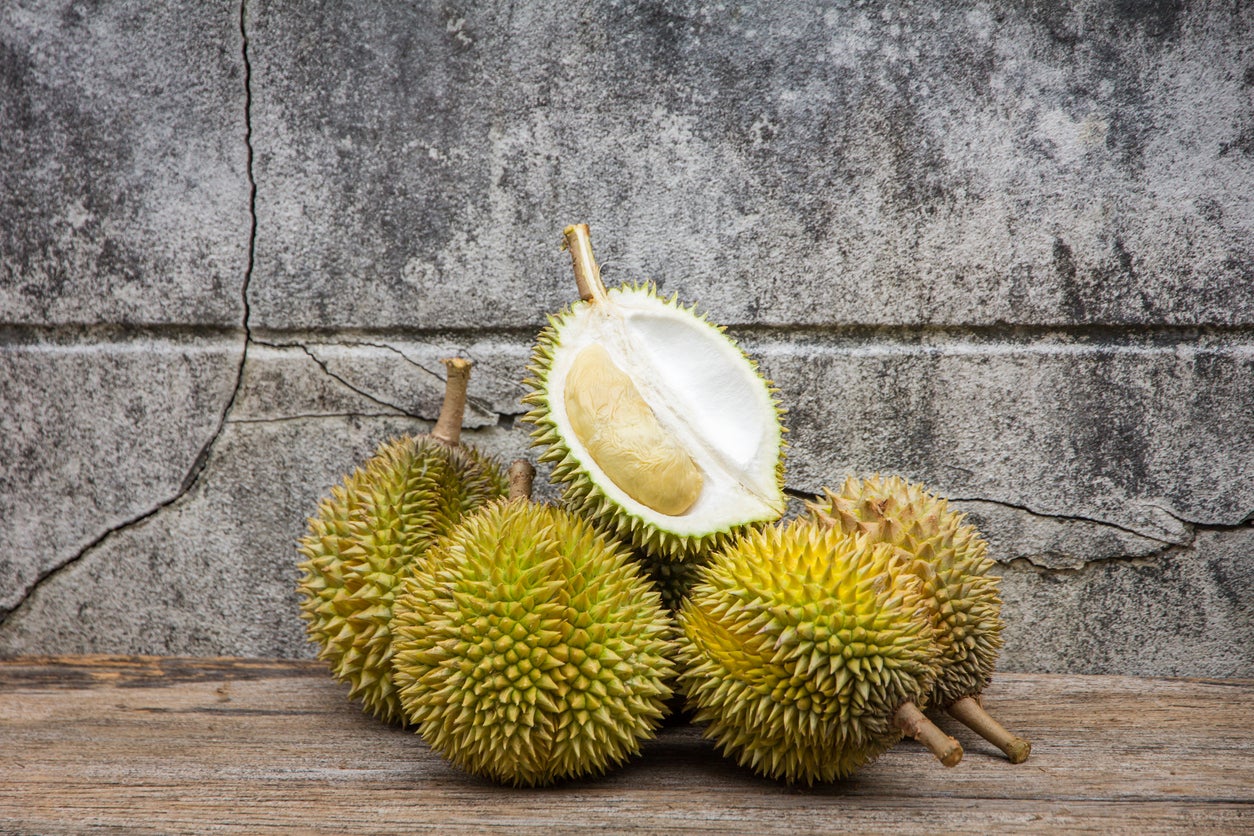
Philippines: Balut
Balut is an egg with a chick inside. A fertilised duck embryo is boiled at between 16 to 21 days old and served with a dash of salt. Crack open the top, slurp out the “soup”, or amniotic fluid, then peel back a little more of the shell to hit the rich yolk and dig down to the chicken embryo, described as comparable to well boiled chicken tendons. It promises to cure hangovers but the crunchy beak may be a little much for tender tummies.
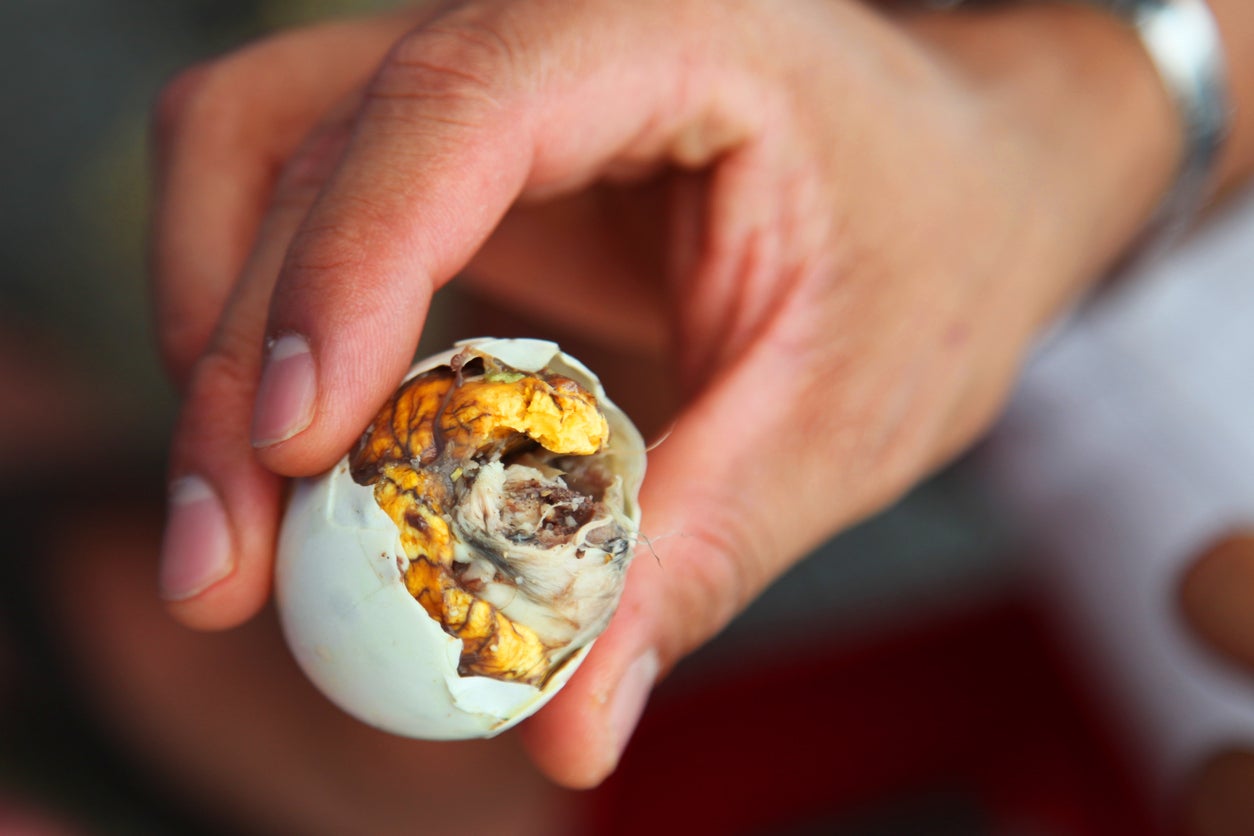
Mexico: Escamoles
For the intrepid gap year foodie who aims to return from Mexico with a story more exciting than “best guacamole I ever had”, escamoles are a must. Known as “insect caviar”, they are the larvae of a venomous ant species that lay their eggs in the roots of agave or maguey plants. When harvested, they are light in colour with a slightly nutty taste. Often pan-fried with butter, onion and chilli, escamoles are eaten in tacos and salsa.

Japan: Tuna eyeballs
No mythical backstory for the tuna eyeball, a niche dish which gained popularity in Japan in the early Nineties when it was revealed to have high concentrations of omega 3 fatty acids. You can now find big tuna eyes staring at you from beneath cling film at most Japanese supermarkets. It is most commonly boiled in water and seasoned to taste with soy sauce and mirin. The dark-brown eye muscles are eaten before the eyeball which is softer and fatty, with a squid like taste.
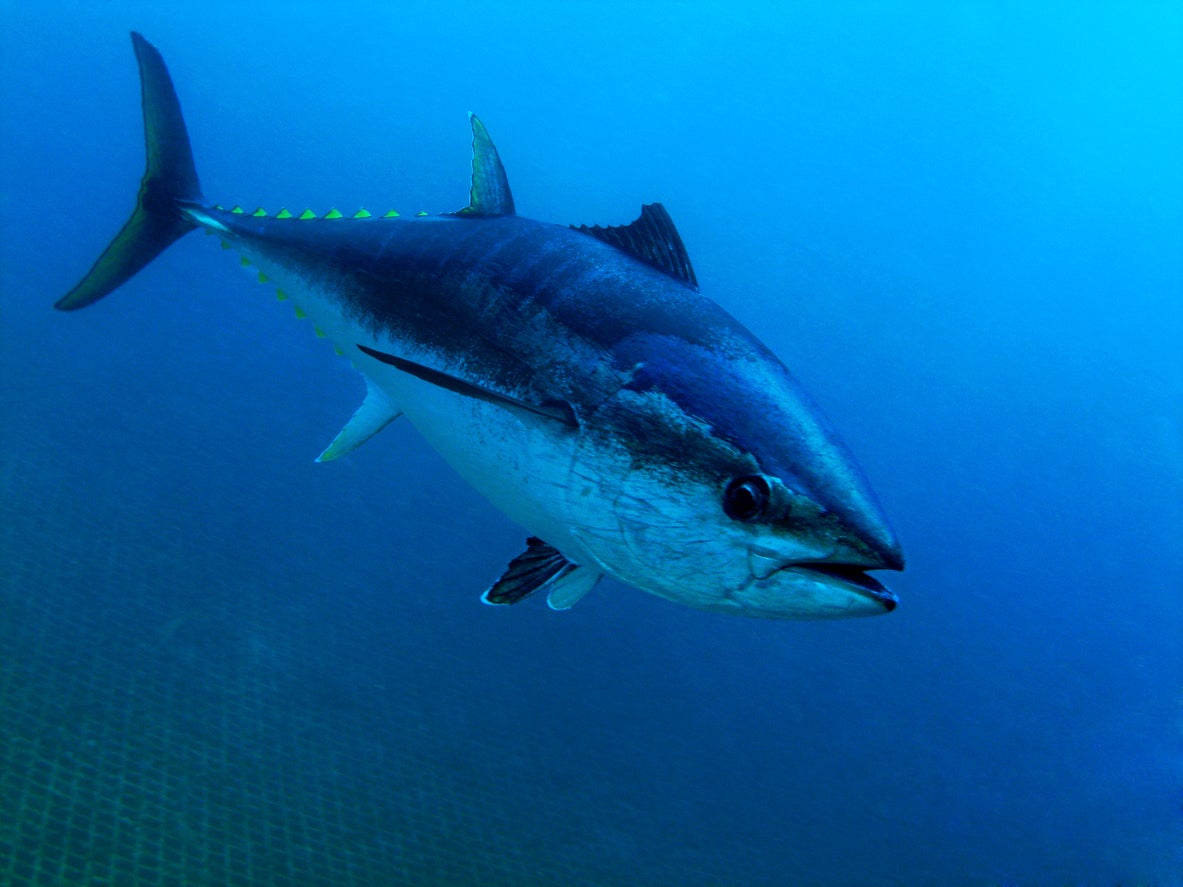
Join our commenting forum
Join thought-provoking conversations, follow other Independent readers and see their replies
Comments